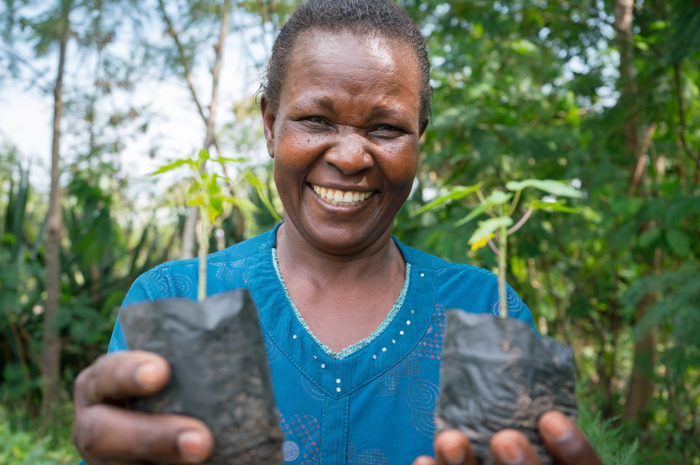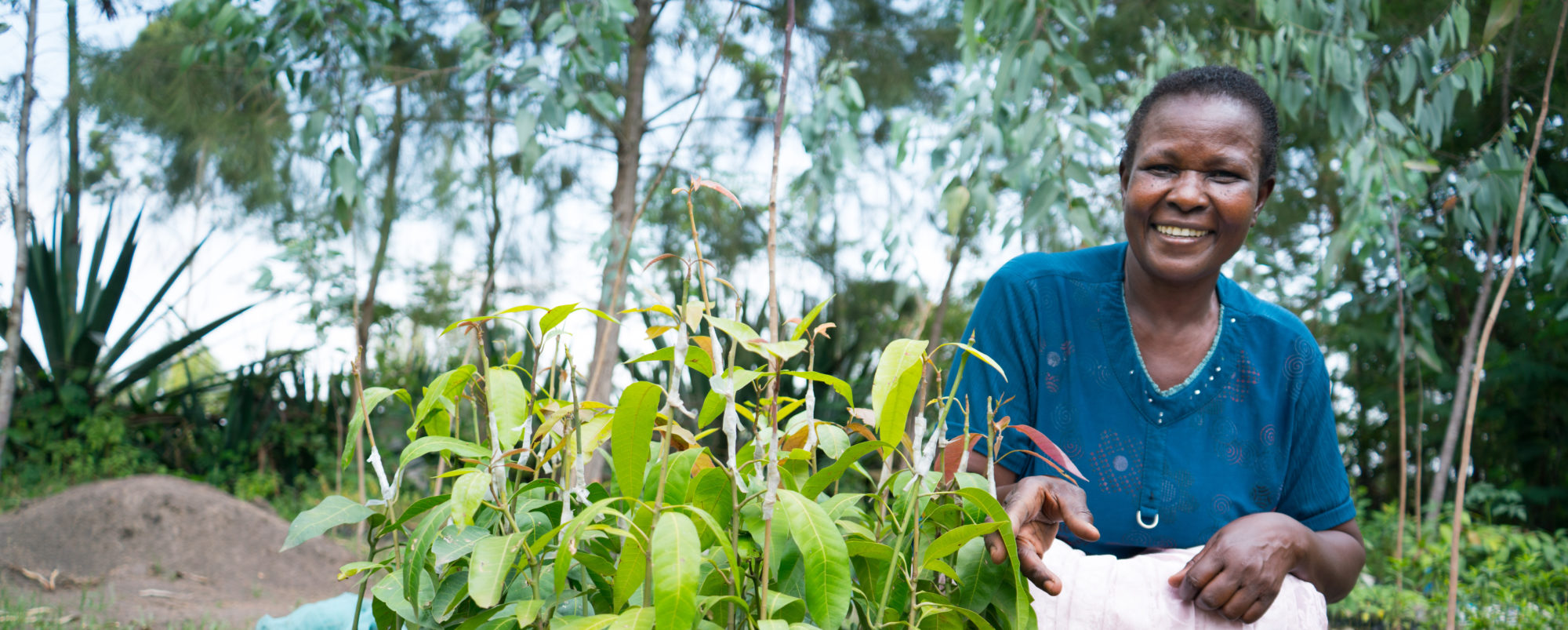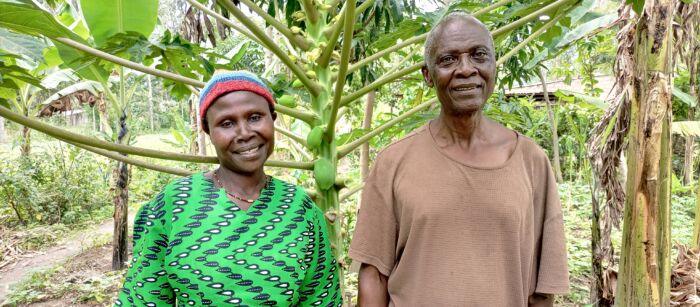
The methods also improve the soil’s water-holding capacity and bind the nutrient-rich soil, which increases the resistance to the effects of climate change (such as drought and rainfall). At the same time, the methods store more carbon in the soil compared to conventional agriculture. This carbon is converted into carbon credits where each tonne of carbon dioxide equivalent is 1 carbon credit.
Carbon dioxide is stored in both trees and soil by the farmers using sustainable cultivation methods such as planting trees together with crops (also called agroforestry), soil-covering crops and compost cover on their farms.
The amount of carbon credits sold to companies and private individuals gives direct payment to participating farmers. An important aspect of the project is that the income from the carbon dioxide storage is only seen as a bonus for the participating farmers: The biggest benefit for families is that the crops increase, which leads to more food on the table and higher income from the sale of the surplus. The project thus generates not only environmental benefits but also financial and social benefits for tens of thousands of families around Lake Victoria.
The project covers an area of approximately 22,000 hectares in Nyanza Province and Western Province of Kenya, in the areas around the cities of Kisumu and Kitale. The project was started together with the World Bank’s BioCarbon Fund in 2009. When the agreement between the players was signed, the project was the first to store carbon dioxide in both trees and soil in Africa. It was also one of the first projects that enabled participating farmers to be rewarded for the environmental service they provide by reducing greenhouse gas emissions based on their work in sustainable agriculture.
The methodology, called VM0017 Sustainable Agricultural Land Management (Read more: https://verra.org/salm_methodology_approved/ ), was developed by Vi Agroforestry, the World Bank’s BioCarbon Fund and UNIQUE forestry and land use. The methodology is designed to suit small-scale farmers. The goal is to increase farmers ‘resilience to the effects of climate change, increase food security through increased farm productivity, increase farmers’ incomes and at the same time reduce greenhouse gas emissions from agriculture. The methodology has been globally recognized and is certified by Verified Carbon Standard (VCS) through Verra.
Every two to three years, the project is verified by a third, independent party. Each year, various follow-ups and checks are also carried out, including pest control, livelihoods, what activities the farmers have carried out and how these have taken place.

